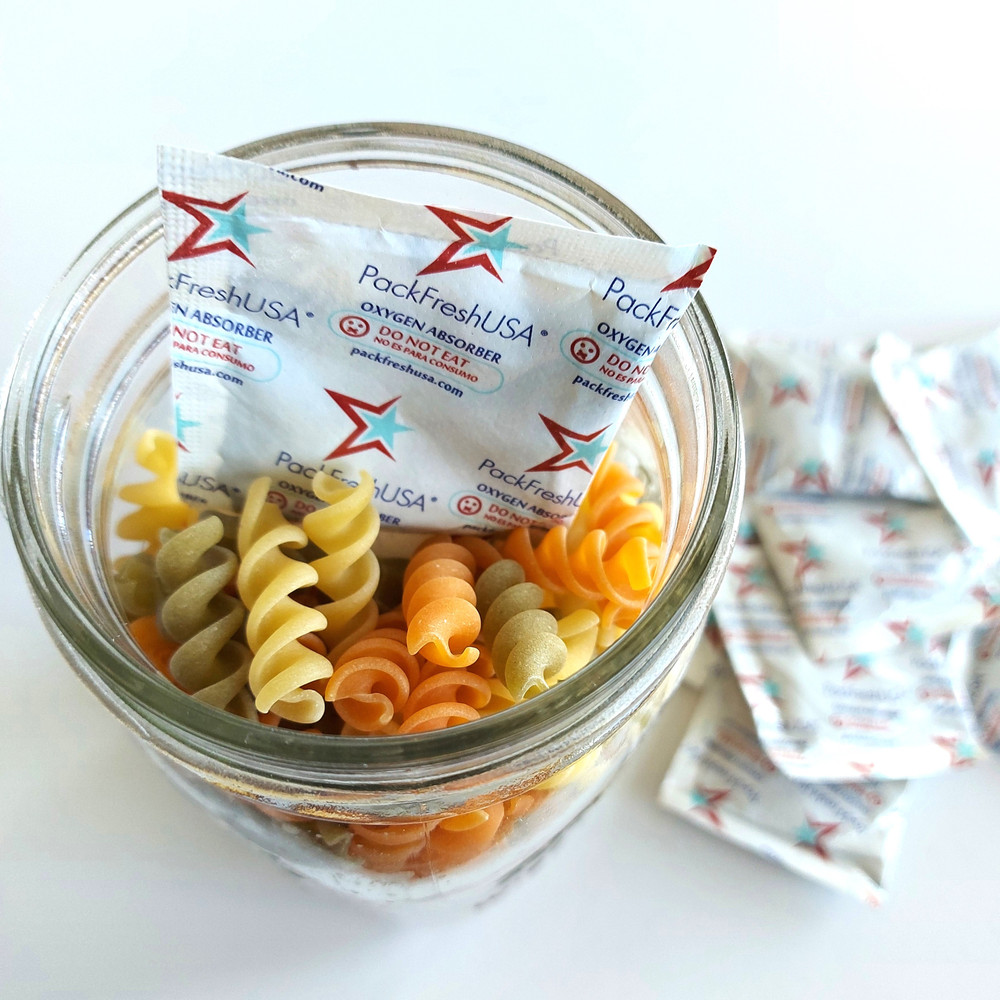Oxygen Absorber - The Myth, The Legend
Posted by Ola Griffin on May 31st 2024
History of Oxygen Absorbers
In 1965, the Japanese invented what we call oxygen absorbers. They found that iron salts absorb oxygen. In 1977, Mitsubishi refined the oxygen absorber to sachets and the rest is history. Modern oxygen absorbers contain iron powder with sodium chloride and the moisture is added into the pack to allow the process to work faster and more effectively.
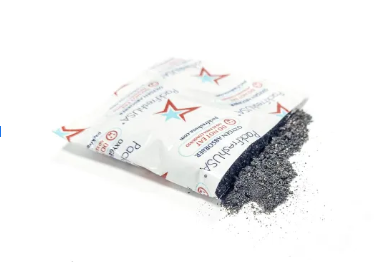
How Oxygen Absorbers Work
Activation - When an oxygen absorber has been removed from the packaging and is exposed to air, the air permeates into the iron and sodium chloride particles inside the sachet. The oxygen in the air along with the moisture in the sachet and the iron cause a reaction or what we call oxidation of the iron resulting in iron oxide. This reaction removes the oxygen. This is why we see a decrease in the air volume within the mylar bag. The oxygen absorber literally eats the oxygen in the air.
Sodium Chloride Activator - Sodium chloride (salt) is added to the iron powder mixture as a catalyst or activator, which interacts with the iron and water to remove the oxygen. In relatively low humidity, the sodium chloride enables the iron powder to oxidize effectively. As oxygen is consumed or removed, it forms iron oxide, and the level of oxygen in the surrounding atmosphere decreases.
Once you open the outer package that the oxygen absorbers are stored in, you simply place them in the container like a Mylar Bag, Mason Jar, or a #10 Can as you seal up your containers. The oxygen automatically goes to work when oxygen is present. That little packet eats the oxygen in the container and then it goes to sleep when no more oxygen is present. The iron powder turns to iron oxide and typically will become hard or harden into pebble-type rocks.
That is why it is important to put your extra oxygen absorbers away. Take out what you need or can use in about 20 minutes and put the rest away. It is normal for oxygen absorbers to warm up when they have been exposed to oxygen; that is the chemical reaction of the iron powder eating the oxygen.
Storing the Extra Oxygen Absorbers
STORING OXYGEN ABSORBERS 3 EASY WAYS, whenever you have extra oxygen absorbers, they are quick and easy to store. I use mason jars, vacuum seal bags, or leave them in the original plastic and seal it with a heat source like an impulse sealer or my flat iron. Click the link for a quick video of storing oxygen absorbers.
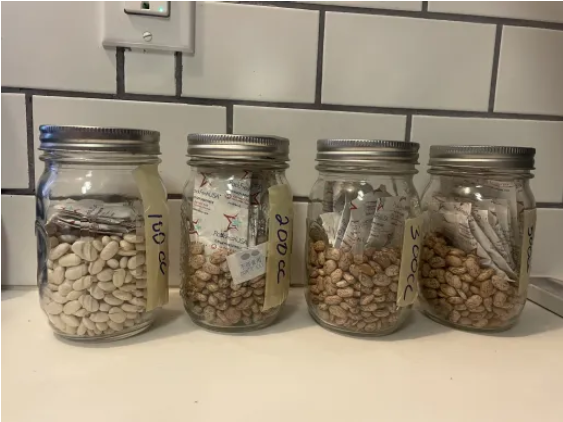
The Amazing Marvel called Oxygen Absorbers
Whether you call them oxygen absorbers, oxygen scavengers, or oxygen eaters they are all the same. This wonderful marvel transformed the food storage industry in amazing ways. Removing the oxygen allows for the food to be bug-free and with an oxygen-free zone, it stops the oxidation of your food, stops the growth of most bacteria, and is an affordable way to allow food storage to turn from months and years to decades. No need to purchase expensive gas flushing equipment or vacuum sealing machines, just use Mylar bags or mason jars with oxygen absorbers and your food is now oxygen free. Using an oxygen absorber is also more effective than those other methods.
What size oxygen absorber do you really need?
Does the size of your oxygen absorber matter? Can you ever overdo it? We will be covering the dos and don’ts of oxygen absorber sizes and so much more. So let’s dive into it: What size oxygen absorber do you really need?
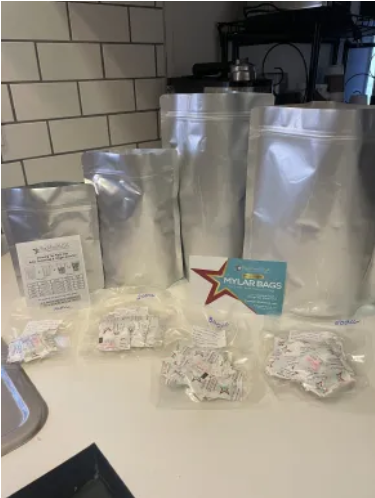
Density of Food
Yes, the density of food does matter. A pound of rocks vs. a pound of cotton balls, their volume will vary greatly. Cotton balls would have a lot of air volume, not that we are storing cotton balls, but you can see how the density of rocks vs. cotton balls would mean you would store a pound of each in different size containers. The cotton balls would most likely fit in a Gallon Mylar bag or even larger and the rocks we would store in pint or quart bags at most. With denser foods you have less air so less oxygen is in the container. I used a small scale to weigh each of these items, using grams as my weight. The handful of cotton balls was about equal in size to the rock. The cotton ball was 4.36 grams (.0096 lbs) and the rock was 197.15 grams (.4343 lbs). You can easily see the huge difference in the weights. I even squished the cotton balls as I placed them on the counter.
Understanding density for food storage is important since that does affect the size of oxygen absorber that is needed. Let's break it down into sections. (Using a gallon size container for this demonstration.)
Column A - Most grains and legumes like beans are pretty dense and so for a gallon size Mylar bag or mason jar a 300cc oxygen absorber would be good to use for these foods since they have very little air volume that is left in the container. Beans and rice only have about 35% air volume. So, a 300cc would remove the oxygen left behind in a full-size gallon container of beans or rice. You will be able to store those items for decades to come.
Column B - Foods that are powdery like flour, that would have 50% air volume, you want to use a larger 400cc in a gallon size container to ensure all the oxygen gets removed. You could use (2) 200cc, (1) 300cc & (1) 100cc, or (4) 100cc oxygen absorbers.
Column C - Represents foods with 75% air volume they include foods like freeze-dried foods, oats, and pastas to name a few. Using a 500cc in a gallon container would ensure you would remove all the oxygen from the food and container.
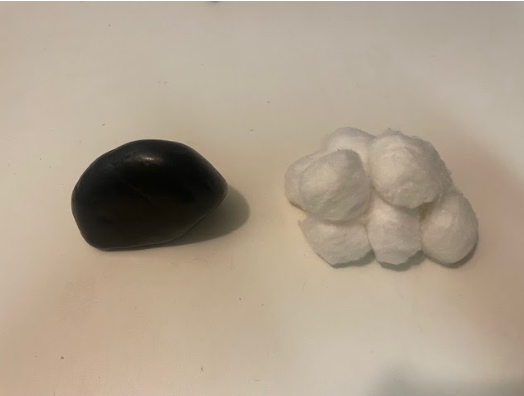
Does All the Air Need to be Removed?
No, oxygen is the only gas that needs to be removed because it is the gas that causes our foods to be oxidized. The “air” only contains 21% oxygen (that is roughly a 1/5th of our air) and air has only 78% nitrogen and a small percentage of other gases. The denser the food the more likely you see less “air” in the bag remaining. The nitrogen is 78% of “air” so it is left in the container with the food. It is not harmful to our food and we can just leave it there. It is beneficial to allow foods like freeze-dried not to get crushed. That nitrogen will be more prevalent in the Column C foods, since there is more “air” in the bag originally and so more nitrogen. You should see a decrease in the overall bag, as the oxygen gets removed by the oxygen absorber, but not as much compared to Column A or B. But if you like the look of more sucked in Mylar then burping (removing as much air as you can) helps. That is why denser foods look more sucked in, not because the oxygen absorber worked better but because the denser foods have less overall air volume.
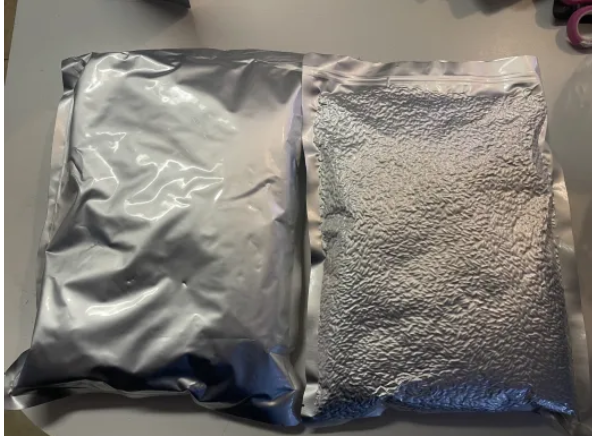
Looking at both these bags the one on the left is a Gallon 7 Mil Premium Mylar Food Storage Bags and Oxygen Absorbers | PackFreshUSA and it is thicker and you can see it is sucked in. The bag on the right is a Gallon 5 Mil Heavy Duty Mylar Food Storage Bags and Oxygen Absorbers | PackFreshUSA you can actually see the grains of rice in this. Even though they both have rice, they both are perfectly sealed. They are two different kinds of rice, but they are both rice. All the oxygen has been removed from both bags, but the thicker 7 mil bag will not show it as much as the thinner 5 mil or 3.5 mil Mylar bags. All Mylar is made for long-term food storage.
So, with rice and beans the density and weight of the food would fill the container and leave very little air space, using foods like freeze-dried foods or elbow macaroni you can see the amount of air volume in that same size container would vastly increase. You would also notice a weight difference from beans vs. elbow macaroni.
Size of the Container
Of course when we look at the size of the container a pint would have less air volume and a Gallon would have 8x the air volume. You would use less oxygen absorbers in a pint then you would in a quart or gallon. So using the correct size oxygen absorber is better and less wasteful.
One Size Fits All Mentality
I am not in that mindset of one size fits all! I don’t think you should use a 500cc for a pint, quart, or even a ½ gallon. I use a 500cc for a gallon. If you are looking for a one size, get some 100cc or 200cc. These are more easily used and add more as needed. I store a lot of my freeze-dried foods in these Quart 7 Mil Seal-Top Premium Gusset Mylar Bags and Oxygen Absorbers| PackFreshUSA which only needs a 200cc max (that is what comes in the combination sets). But if you just have the bags, then to get to the max needed you can use either a single 200cc or (2) 100cc to equal the 200cc.
PackFreshUSA makes it easy since when you purchase our combination sets they give you that maximum size oxygen absorber that is needed for the bag. They call it the Worry Free Oxygen Absorbers, whether you have rice, beans, flour, or freeze-dried goods you know you have the protection your food needs to get the zero oxygen zone needed to extend the life of your food from months to decades.
What Size Oxygen Absorber Do You Need - This chart gives you the Worry Free Oxygen Absorber from ½ pint to 5-Gallon and that means no stress.
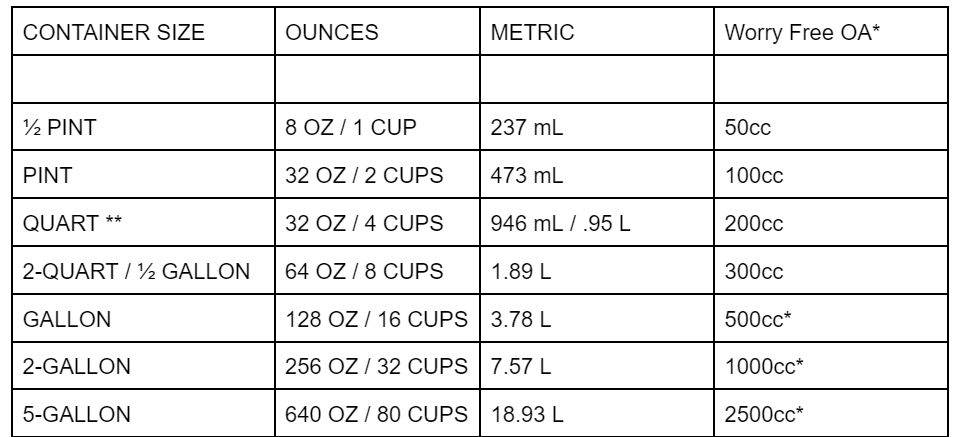
*container must be full
** quart flat mylar bags 8x12 are larger than 4 cups (treat them as a 2-quart)
“Can I double up the oxygen absorber?”
That is a question I get from customers at least weekly. I always answer this question with “it depends.”
Vacuum Sealed Mylar or Mason Jar
Now a lot of people like to vacuum seal their mylar bags in chamber style machines or vacuum seal their mason jars. It is not necessary to vacuum seal Mylar if you use the correct size oxygen absorber. However, if you do, I recommend a low-end oxygen absorber (using about ⅓ to ¼ the size you originally need.) Again, why waste oxygen absorbers, since the machine does a good job of removing the air, there is some residual air and so a small amount of oxygen could be left in the vacuum-sealed food. That is why a low-end oxygen absorber is useful to make sure all the oxygen gets removed.
Freeze-dried Foods
First, if you are storing your foods in a container with the maximum oxygen needed or worry-free oxygen absorber then there really is no need to add extra oxygen absorbers. Can you do it? Yes, but be cautious with freeze-dried foods.
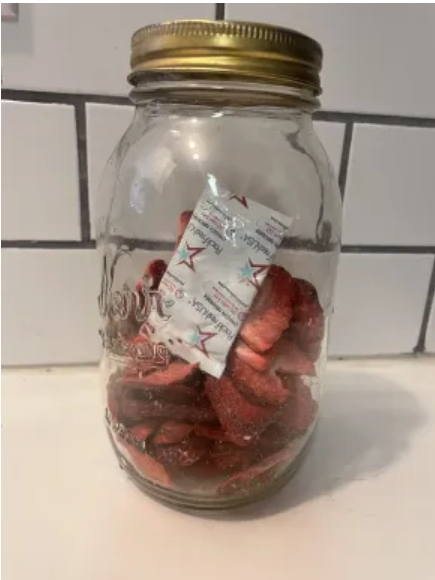
Less is best when using oxygen absorbers when it comes to freeze-dried foods, especially foods like fruits (strawberries). Freeze-dried strawberries can almost immediately start to absorb moisture just from the air. Getting them quickly packed up into Mylar/mason is the best way to store them. I love the 5 Mil Stand-up Metalized silver bags, 5 mil Silver Mylar Stand Up Pouches | PackFreshUSA, the Mylar Gusset Bags, Quart - PackFreshUSA, or Mylar Gusset Bags, Pint - PackFreshUSA. Since they all are stand-up style they are not only easy to fill, but with a zip they are wonderful for stopping the strawberries from absorbing moisture from the air. The zip allows me to seal off the air and finish filling bags. Close the zip seal as I go. I will come back to the Mylar bags, add the oxygen absorbers, burp (remove the extra air), zip it closed and then heat seal the Mylar at the top above the zip. Mylar needs to be heat-sealed to ensure you can keep the food for decades, zips will leak air over time if left unsealed.
If you really want to add a little bit larger oxygen absorber than the worry-free size based on the container size, go up by 100cc on freeze-dry foods. If you are storing beans and rice if you want to double up the OA then feel free. Again, if you are freeze-drying, please never double up the oxygen absorber. You are leaving trapped moisture from the oxygen absorbers trapped in containers with moisture-sensitive foods. There is more air volume in the freeze-dried foods, so using a maximum size oxygen absorber should remove the oxygen, but leave the nitrogen behind.
The invention of the oxygen absorber enabled the prepping world and food packaging companies to up their game. Not only are they cost-effective they are almost foolproof since they have a variety of sizes to fit for any application.
Happy prepping ya’ll.
Ola D Griffin
Long-term Food Storage Expert
Customer Service, Safeguard Brands, Inc. dba PackFreshUSA
YouTuber Pandemic Prepsters - YouTube
Instagram - @Preparedness101
Tiktok - @Oladeegriffin

Phone: (844) 857-8277
Mobile: (951)902-4644
Email: customerservice@packfreshusa.com
Website: PackFreshUSA.com
Toll Free 5 Star Service Line: (844) 8 5 STARS (844) 857-8277

